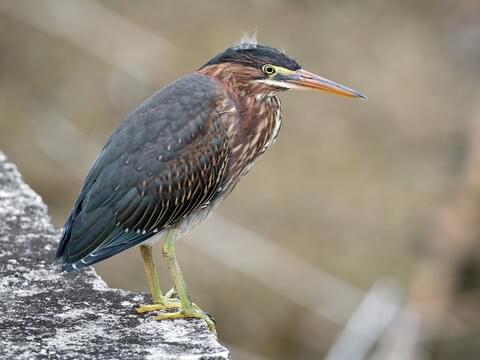
My daughter, Angelin, and I went fishing early this week at a friend’s lake. The fish were not very cooperative, but still, a bad day’s fishing beats a good day of most anything else.
I pulled up a chair at the lake’s
edge, lit up a cigar and cast out a Berkley Power Bait Minnow in hopes of a
bite. Angelin was in a paddle boat,
trolling a lure, then pointed to the bank and said, “Daddy, look at that bird.”
What bird?
About 30 feet away from my chair was a darkish bird, easing along the edge of a bank. It looked like some sort of smaller marsh bird – in the egret or heron family. I don’t know if the bird flew in or had walked in, but I assumed he would fly away when he saw me. I made a cast, and the bird was still beside me, creeping my way and tiptoeing as if stepping through a mine field.
My attention turned away from the fishing to the bird watching department. My feathered friend, eyes glued to the ground, would ease one foot in front of another, then stabbed at the ground with his long bill. He was catching crickets and beetles, not minnows.
The strange looking bird was about the size of a crow and continued creeping his way toward me, occasionally stopping to spear an insect, and got within about 8 feet. I think he would have walked right in front of my chair, but he flew off when Angelin got out of the boat and drew near. When I got home, I scoured through my bird books and ultimately identified my friend as green heron – probably a juvenile bird because of fluffy feathers and his lack of fear of my presence.
According to the Audubon people, the green heron is a stocky bird. The wings and back of adult birds are green mixed with blue gray. The upper breast, sides of neck, and head are chestnut with a dark blue-green crown that can be raised to a crest when alarmed. I don’t know why they are called green herons – there isn’t a lot of green on the birds, but that’s their name. In poor lighting, green herons simply look dark.
The young birds are more heavily streaked on neck and chest, as was this bird, and duller and grayer on back. Green herons are found in wetlands throughout the eastern part of the country. Interestingly, they are able to makes lures from bread crusts, earthworms, or other treats to entice small fish to the surface, where they promptly snap them up.
We only caught a few fish but sharing the bank with this interesting bird made the trip well worthwhile.

